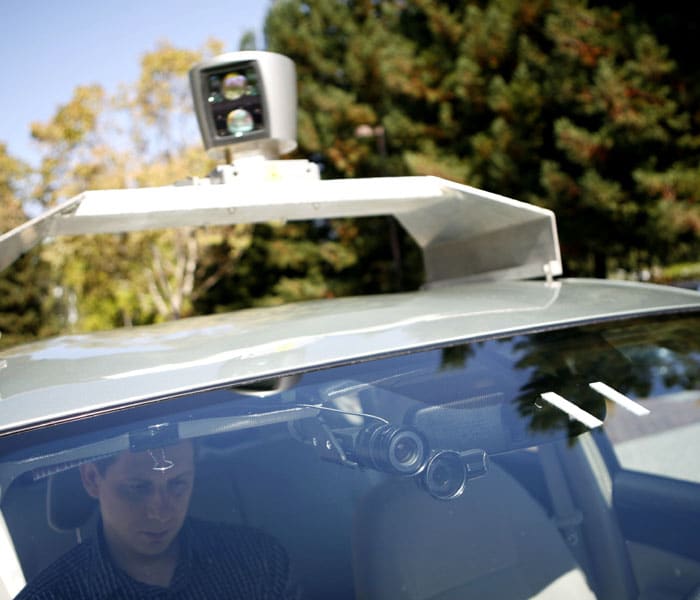Google tests self-driving cars
Google, owner of the world's most popular search engine, has tested cars that can drive themselves without human intervention. With someone behind the wheel to take control if something goes awry and a technician in the passenger seat to monitor the navigation system, seven test cars have driven 1,000 miles without human intervention and more than 140,000 miles with only occasional human control.
-
 Google, owner of the world's most popular search engine, has tested cars that can drive themselves without human intervention. With someone behind the wheel to take control if something goes awry and a technician in the passenger seat to monitor the navigation system, seven test cars have driven 1,000 miles without human intervention and more than 140,000 miles with only occasional human control. (NYT Photo)
Google, owner of the world's most popular search engine, has tested cars that can drive themselves without human intervention. With someone behind the wheel to take control if something goes awry and a technician in the passenger seat to monitor the navigation system, seven test cars have driven 1,000 miles without human intervention and more than 140,000 miles with only occasional human control. (NYT Photo) -
 Google said each car is equipped with video cameras, radar sensors, and a laser range finder that alerts the vehicle to other traffic, and they navigate using maps previously collected by cars that were driven by good old fashioned human beings. The self-driving cars, which also includes an Audi TT alongside the six Prius hybrid, Google says, are never unmanned.
Google said each car is equipped with video cameras, radar sensors, and a laser range finder that alerts the vehicle to other traffic, and they navigate using maps previously collected by cars that were driven by good old fashioned human beings. The self-driving cars, which also includes an Audi TT alongside the six Prius hybrid, Google says, are never unmanned.
The car is a project of Google, which has been working in secret but in plain view on vehicles that can drive themselves, using artificial-intelligence software that can sense anything near the car and mimic the decisions made by a human driver. (NYT Photo) -
 Autonomous cars are years from mass production, but technologists who have long dreamed of them believe that they can transform society as profoundly as the Internet has. Robot drivers react faster than humans, have 360-degree perception and do not get distracted, sleepy or intoxicated, the engineers argue. They speak in terms of lives saved and injuries avoided — more than 37,000 people died in car accidents in the United States in 2008. (NYT Photo)
Autonomous cars are years from mass production, but technologists who have long dreamed of them believe that they can transform society as profoundly as the Internet has. Robot drivers react faster than humans, have 360-degree perception and do not get distracted, sleepy or intoxicated, the engineers argue. They speak in terms of lives saved and injuries avoided — more than 37,000 people died in car accidents in the United States in 2008. (NYT Photo) -
 The engineers say the technology could double the capacity of roads by allowing cars to drive more safely while closer together. Because the robot cars would eventually be less likely to crash, they could be built lighter, reducing fuel consumption. But of course, to be truly safer, the cars must be far more reliable than, say, today's personal computers, which crash on occasion and are frequently infected. (NYT Photo)
The engineers say the technology could double the capacity of roads by allowing cars to drive more safely while closer together. Because the robot cars would eventually be less likely to crash, they could be built lighter, reducing fuel consumption. But of course, to be truly safer, the cars must be far more reliable than, say, today's personal computers, which crash on occasion and are frequently infected. (NYT Photo) -
 The car can be programmed for different driving personalities — from cautious, in which it is more likely to yield to another car, to aggressive, where it is more likely to go first.
The car can be programmed for different driving personalities — from cautious, in which it is more likely to yield to another car, to aggressive, where it is more likely to go first.
The Google research program using artificial intelligence to revolutionize the automobile is proof that the company's ambitions reach beyond the search engine business. The program is also a departure from the mainstream of innovation in Silicon Valley, which has veered toward social networks and Hollywood-style digital media. (NYT Photo) -
 The project is the brainchild of Sebastian Thrun, the 43-year-old director of the Stanford Artificial Intelligence Laboratory, a Google engineer and the co-inventor of the Street View mapping service.
The project is the brainchild of Sebastian Thrun, the 43-year-old director of the Stanford Artificial Intelligence Laboratory, a Google engineer and the co-inventor of the Street View mapping service.
In 2005, he led a team of Stanford students and faculty members in designing the Stanley robot car, winning the second Grand Challenge of the Defense Advanced Research Projects Agency, a $2 million Pentagon prize for driving autonomously over 132 miles in the desert.
Advertisement
Advertisement
